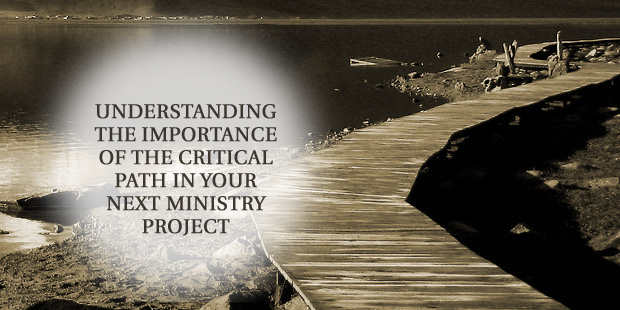
Understanding the Importance of the Critical Path in Your Next Ministry Project
The longest string of dependent, non-compressible tasks is the critical path.
Every complicated project is the same. Many people working on many elements, some of which are dependent on others. I want a garden, which means I need grading, a bulldozer, a permit, seeds, fertilizer, irrigation, weeding, planting, maintenance and time for everything to grow. Do those steps in the wrong order, nothing happens. Try to grow corn in a week by giving it a bonus or threatening to fire it, nothing happens…
Critical path analysis works backward, looking at the calendar and success and at each step from the end to the start, determining what you’ll be waiting on.
For example, in your mind’s eye, the garden has a nice sign in front. The nice sign takes about a week to get made by the sign guy, and it depends on nothing. You can order the sign any time until a week before you need it. On the other hand, you can’t plant until you grade and you can’t grade until you get the delivery of soil and you can’t get the delivery until you’ve got a permit from the local town.
Which means that if you’re the person in charge of both the sign and the permit, do the permit first.
That’s obvious, right? And yet…
And yet most organizations focus on shiny objectives or contentious discussions or get sidetracked by emergencies instead of honoring the critical path.
Thirty years ago, I led a team of forty people building an incredibly complex series of products, all of which had to ship in time for the Christmas selling season. The stakes were pretty high: if we missed by even one day, the entire company was going to fold.
We did some critical path analysis and pretty quickly identified the groups of people that others would be waiting on as each stage of the project developed. It’s a relay race, and right now, these four people are carrying the baton.
I went out and got some buttons–green and red. The deal was simple: If you were on the critical path, you wore a green button. Everyone else wore red. When a red button meets a green button, the simple question is asked, “how can I help?” The president will get coffee for the illustrator if it saves the illustrator three minutes. In other words, the red button people never (ever) get to pull rank or interrupt a green button person. Not if you care about critical path, not if you care about shipping.
Once you’re aware of who’s on the path, you understand the following: delaying the critical path by one hour at the beginning of the project is the very same thing as delaying the entire project by an hour at the very end.
Rush early, not late. It’s cheaper that way, and better for your peace of mind, too.
Read more from Seth here.












